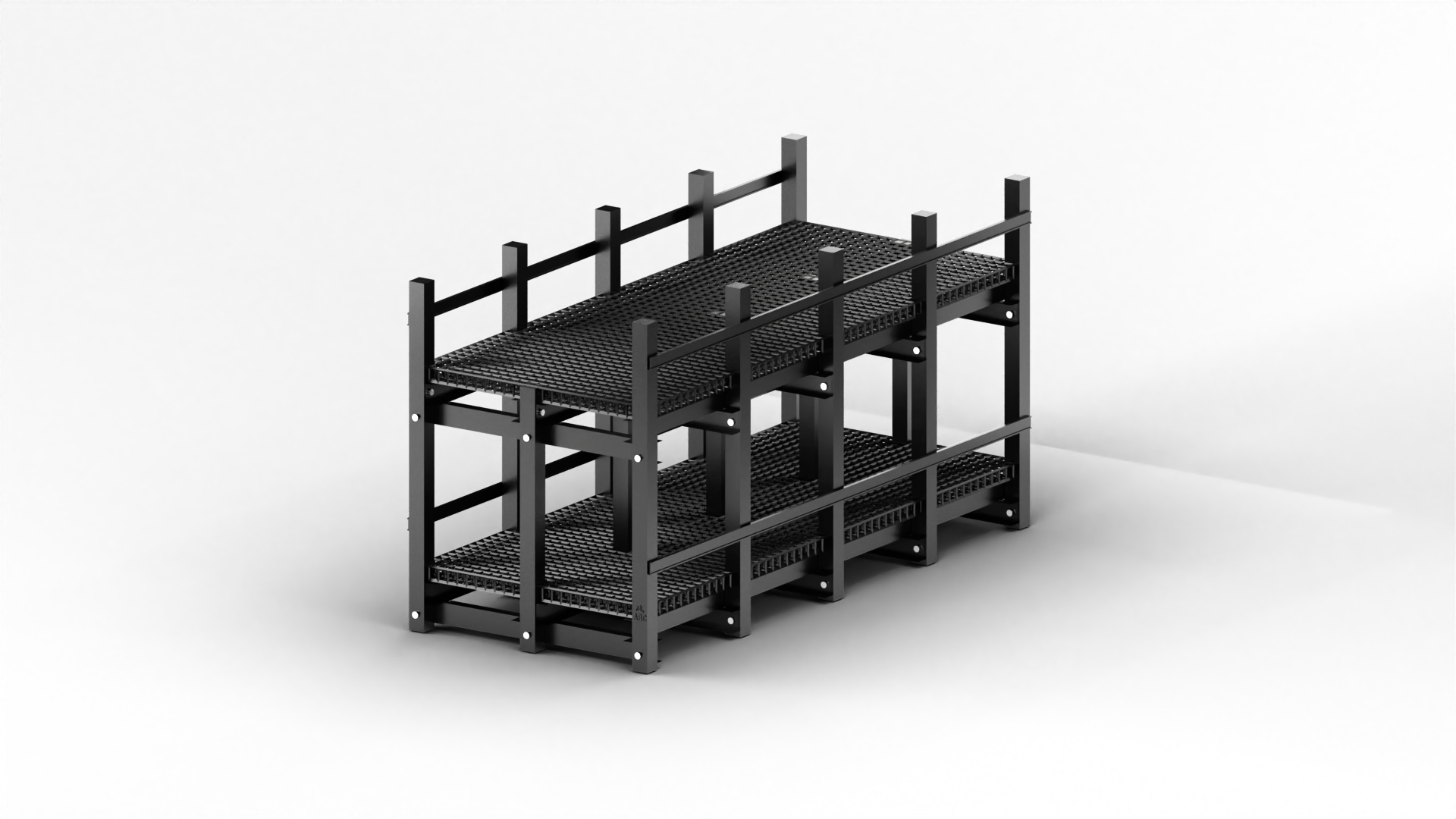A battery stand, also known as a battery rack or battery cabinet, is a structural support system designed to securely hold and organize multiple battery cells or modules in a specific configuration.
Battery stands are typically constructed from durable materials like FRP (fibre-reinforced plastics) to ensure structural integrity and resistance to corrosion. They often feature a modular design, allowing for easy expansion or reconfiguration as battery capacity requirements change.
A Battery stand consisting of various FRP structural profiles like Channel, Sq. Tube etc. which is manufactured by pultrusion process.






FRP battery stands are highly resistant to corrosion caused by battery acid, electrolytes, and other chemicals involved in battery operations. This resistance ensures a longer service life and reduces maintenance costs compared to traditional metallic battery stands, which are susceptible to corrosion in such environments.


FRP battery stands are excellent electrical insulators, which is crucial in battery installations to prevent short circuits, electrical hazards, and potential damage to equipment or personnel.


FRP battery stands are lightweight yet possess excellent strength-to-weight ratios, making them easier to handle and install compared to metallic battery stands of similar strength. This characteristic also reduces the load on supporting structures.


FRP battery stands are resistant to fouling, scaling, and buildup, which can reduce the need for frequent cleaning and maintenance, resulting in lower operational costs.


FRP battery stands are resistant to a wide range of chemicals, including battery acids, electrolytes, and other substances commonly found in battery installations, ensuring long-lasting performance.


FRP battery stands are non-sparking, which makes them safer for use in potentially explosive environments or areas with flammable materials, such as battery rooms.


FRP battery stands can be manufactured in various sizes, shapes, and configurations to accommodate different battery types and layouts, allowing for customization to meet specific application requirements.


FRP battery stands are resistant to environmental factors such as UV radiation, temperature fluctuations, and moisture, ensuring long-lasting performance in both indoor and outdoor installations.


FRP battery stands are generally lighter and easier to handle than metallic battery stands, facilitating easier installation and reducing labor costs.


FRP battery stands can be tailored to specific applications by incorporating various additives or coatings to enhance their properties, such as increased conductivity or fire resistance.
| Ultimate Coupon Properties | Test Method | Units | Square Tube Values | Round Tube Values |
|---|---|---|---|---|
| Tensile Stress, LW | ASTM D 638 | psi | 30000 | 30000 |
| N/mm2 | 207 | 207 | ||
| Tensile Modulus, LW | ASTM D 638 | 106 psi | 2.5 | 2.5 |
| 103 N/mm2 | 17.2 | 17.2 | ||
| Compressive Stress, LW | ASTM D 695 | psi | 30000 | 30000 |
| N/mm2 | 207 | 207 | ||
| Compressive Modulus, LW | ASTM D 695 | 106 psi | 2.5 | 2.5 |
| 103 N/mm2 | 17.2 | 17.2 | ||
| Flexural Stress, LW | ASTM D 790 | psi | 30000 | 30000 |
| N/mm2 | 207 | 207 | ||
| Flexural Modulus, LW | ASTM D 790 | 106 psi | 1.6 | 1.6 |
| 103 N/mm2 | 11.0 | 11.0 | ||
| Short Beam Shear, LW | ASTM D 2344 | psi | 4500 | 4500 |
| N/mm2 | 31 | 31 | ||
| Density | ASTM D 792 | Lbs/in³ | 0.060 | 0.060 |
| N/mm3 | D.0000163-0.0000193 | 0.0000163-0.0000193 | ||
| Water Absorption % 24 Hrs. in water | ASTM D 570 | % max by wt. | 0.6 | 0.6 |
| Coefficient Of Thermal Expansion, LW | ASTM D 696 | 10-6 in/in/°F | 7 | 7 |
| 10-5mm/mm/°c | 1.2 | 1.2 |


ARC FRP products come with an in-house test certificate documenting performance, quality, and compliance based on internal testing and evaluations.
Download

ARC FRP products come with the ATIRA test certificate verifying independent assessment of their quality, performance, and adherence to industry standards.
Download